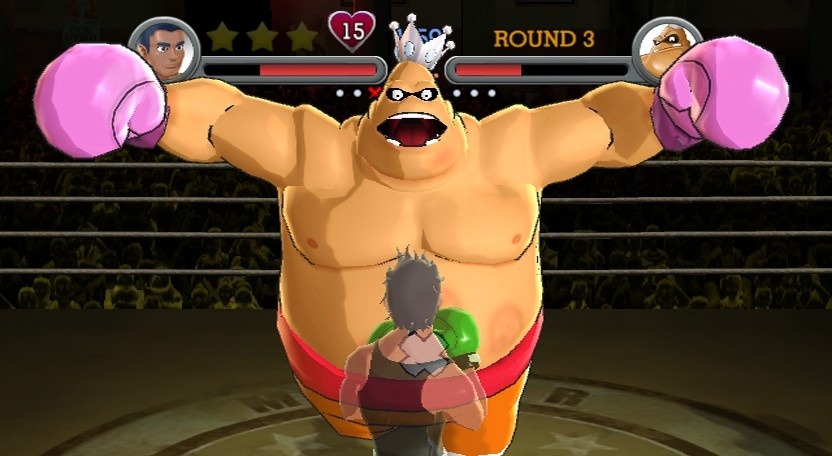A history of the Punch-Out!! series
Nintendo isn’t typically associated with sports games, but here’s a look at one of its most iconic sporting series.
The first Punch-Out!! was born out of technological and economic necessity, rather than any particular desire to make a boxing game. Nintendo was investigating new sprite handling technology at a time when scaling and rotation had both become possible, but limitations meant that only a single sprite could be manipulated. They had also bought a load of monitors after the success of Donkey Kong, but was left with an excess as sales died down. In order to shift it, the decision was made to create an arcade game with two monitors, but Nintendo had an issue – what kind of game only used a single scaling object? Inspiration struck – boxers only ever have one opponent, and although there would be boxing backgrounds, the main screen would be clutter-free, emphasising the visuals.
Despite initial plans to use boxing glove controls, the game premiered in arcades in 1983 with a joystick and three buttons. It was a success for two reasons – firstly, the gameplay, in which you had three minutes to knock out your opponent by carefully dodging and punching, building up your KO bar in the process. It also delivered on the memorable character front, with fighters such as Glass Joe and Bald Bull having distinct characteristics and weaknesses. Learning how these characters fought and how to best exploit these weaknesses became an integral part of gameplay.
The focus was instead put on creating more memorable characters
After the game’s success, a sequel was inevitable. With the exception of adding a ducking mechanic – achievable through pulling the joystick backwards – there were no major gameplay changes because none were really needed. The focus was instead put on creating more memorable characters, further strengthening this aspect of the series. 1985’s Super Punch-Out!! included five of the original six fighters, but also introduced new, non-traditional boxers. Bear Hugger was a lumberjack figure who used a double-handed chop, and Dragon Chan (modelled on Bruce Lee) used the ropes to deliver flying kicks. This game received similar praise, although a 1985 spin-off (Arm Wrestling, featuring Bald Bull in disguise as the mysterious Mask X) failed to pick up much traction.
Nintendo moved away from the arcades, and it was decided to bring Punch-Out!! to the new NES in 1986. The designers weren’t happy with recreating the battles between two huge characters, and instead chose to focus on the size of the opponent. The player character became really small, making it more satisfying to win, and this size disparity was the original of the player-character’s name, Little Mac. Changes were also made to gameplay to add depth – matches now followed a three-round structure, and swinging widely was discouraged through a heart system, representing Mac’s fighting spirit.
Characters returned from the arcade games, including Bald Bull and Vodka Drunkenski (now renamed Soda Popinski, to be family-friendly), and there were a number of new creations, including Von Kaiser and fan favourite King Hippo. Little Mac gained a corner man, Doc Louis, to give hints between rounds, but the real boon was Mike Tyson. Tyson was the most challenging fighter in the game, and its October 1987 release coincided with a successful title defence, which was perfect publicity. After Tyson’s personal issues hit the headlines and he lost a championship to ‘Buster’ Douglas, Nintendo removed his name from the licence. Tyson remained, but was renamed Mr Dream and had a redrawn head.
Little Mac has transitioned into the Super Smash Bros games
Little Mac returned on the SNES in 1994’s Super Punch-Out!!, and the game’s aesthetic became closer to that of the arcade as a result of more powerful hardware. The hearts of the NES game were gone, and the KO bar made a return. Mac grew to be more medium-sized, and his character was redesigned with brown hair. A variety of fighters were added (such as Mad Clown, who throws juggling balls at you) to add long-term value, and characters were again praised. However, Mac would soon head into a long retirement.
He cameoed as a GameCube-exclusive fighter in 2005’s Fight Night Round 2, and as an overweight ex-boxer in the bizarre Captain Rainbow. It wouldn’t be until 2009 when he returned for his own game, Punch-Out!! on the Nintendo Wii. The gameplay style was close to that of the NES instalment, with the few new additions including optional motion controls and a two-player mode. As is typical, Next Level focused on character, using cel-shaded 3D visuals and voice-acting to convey personality. There was only one new character, Disco Kid, although Donkey Kong also appeared as a surprise challenger. The game was well-received, and Club Nintendo members could download a sparring game with Doc Louis that same year.
The Punch-Out!! series has vanished again, and Little Mac has transitioned into the Super Smash Bros games. He first appeared in Brawl as an Assist Trophy, an item that helps the player, but he became a playable character starting with the 3DS and Wii U versions. His Final Smash sees him transform into Giga Mac, a larger version of the character that rapidly pummels his opponents.
Based on historical precedent, it may be a long time before we see a new Punch-Out!! game. But, as the series has only produced fan-adored and critical-loved games, it would be daft for Nintendo not to revisit Little Mac. Maybe the Switch could be the next home for this iconic boxer…

Comments